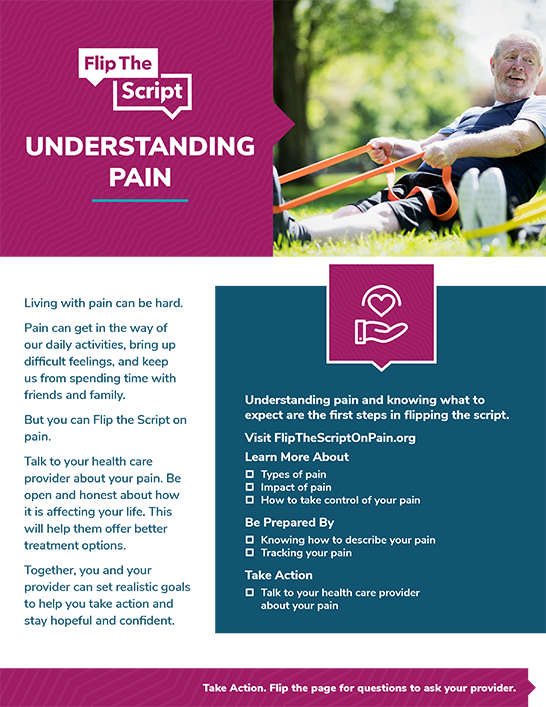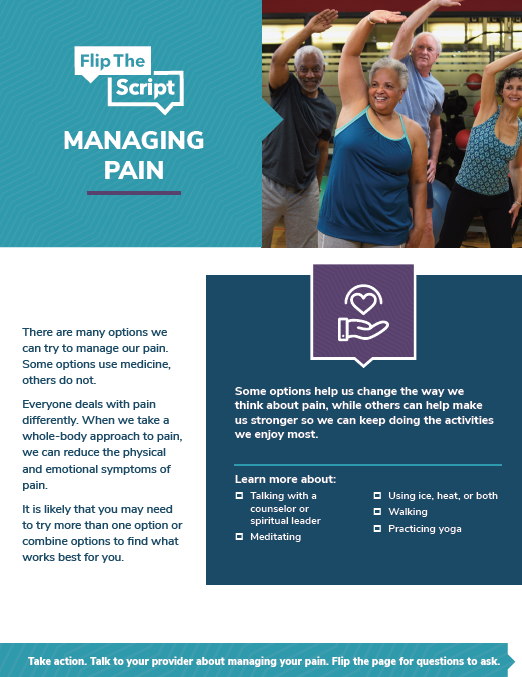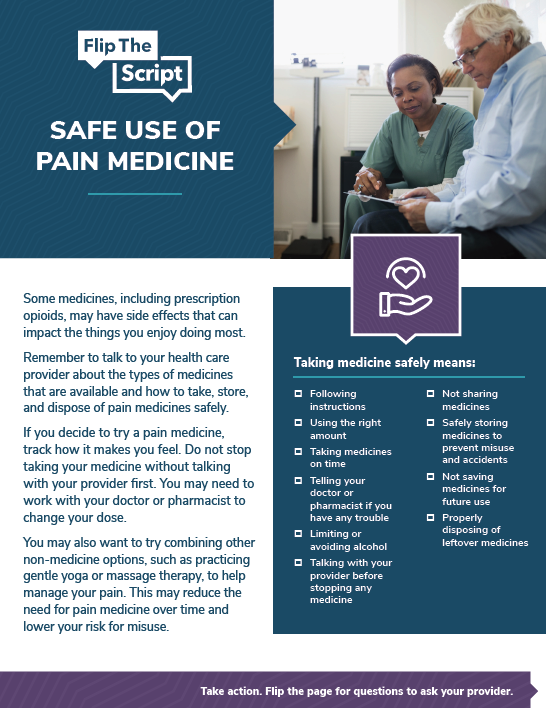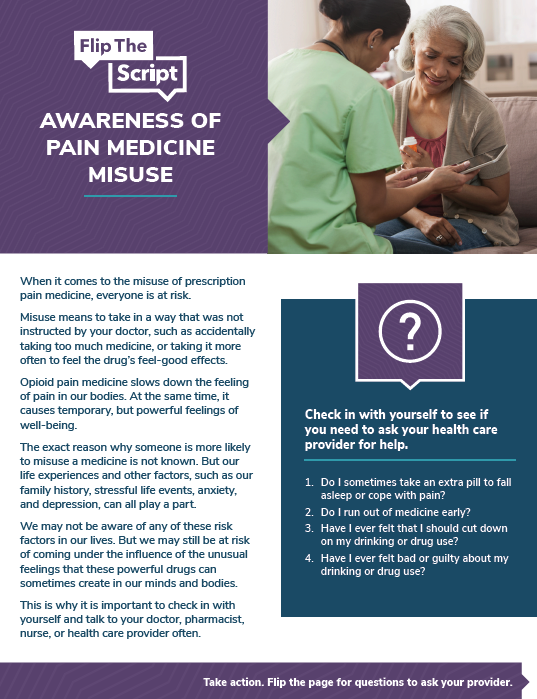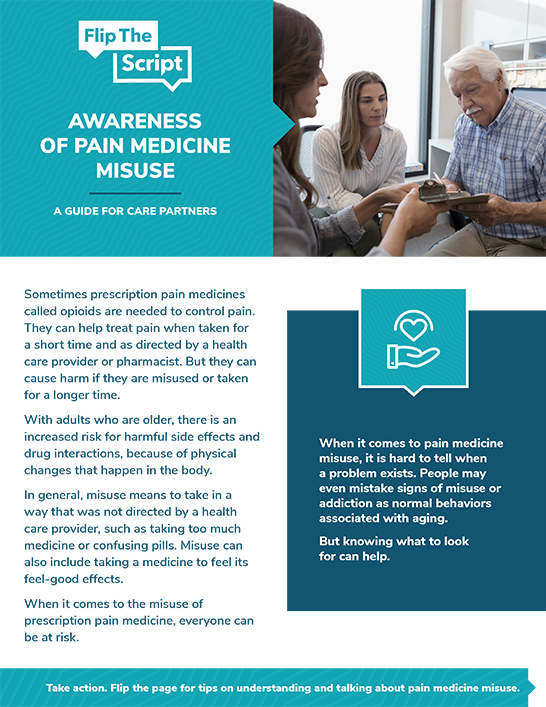Managing Pain
- Home
- Managing Pain
Everyone deals with pain differently. When we take a whole-body approach to pain, we can reduce the physical and emotional symptoms of pain.
Some people do not talk about their pain because they do not want to complain or worry others.
But what is important is knowing that pain is not a normal part of aging. Talk to your health care provider about your pain. Together, you can find options that work for you.
Treatment Options
There are many options to manage pain. One way is to take medicine. Another option is to use ice or heat or do things that help relax you.
When it comes to treating pain, you need to feel comfortable with your treatment plan. It is likely that you may need to try more than one option or combine different options to find what works best.
Pain Medicine Options
There are a wide range of pain medicines your provider could suggest. These include over the counter medicines, like acetaminophen or aspirin or stronger prescription opioid medicines. There are many medicines that are not opioids that can help relieve pain.
The cause of pain, like an injury or nerve damage, where the pain is located and other information can help determine what medicine is used and how it is provided.
Learn more about types of medicine used to treat pain at Health in Aging.
Options without Medicine
There are other options that do not include medicine. These can help reduce physical pain and difficult emotions and thoughts.
For example, physical therapy and exercises for a person’s specific condition could improve movement and reduce pain. Relaxation techniques can help us calm stressful thoughts we may have when we feel pain.
Non-medicine options may not only treat pain, but also improve other areas of our life. Staying in touch with friends and finding meaning through spiritual or religious practice can help our overall well-being.
These options can treat pain and help us get back to doing the things we enjoy most. Trying different options can help you stay in control of your healing.
The National Institute of Aging shares non-medicine treatments that may help with pain such as:

Acupuncture
uses hair-thin needles to stimulate specific points on the body to relieve pain. Acupuncture is based on traditional Chinese medicine and provides pain relief with no side-effects by stimulating the body’s pain-relieving endorphins.

Biofeedback
helps control heart rate, blood pressure, muscle tension and other body functions. This may help reduce pain and stress level.

Cold and Heat
Cold can be useful soon after an injury to relieve pain, decrease inflammation and muscle spasms and help speed recovery. Heat raises pain threshold and relaxes muscles.

Counseling
can help identify how certain thoughts and attitudes impact pain. Counseling can help shift the focus on what you can do instead of thinking only about what you can’t do. Evidence-based methods, such as cognitive behavioral therapy, can help you change unhelpful thoughts.

Distraction
can help you cope with acute pain, taking your mind off your discomfort to focus on things that are more pleasurable.

Electrical Nerve Stimulation
uses electrical impulses to relieve pain.

Interventional Pain Management
procedures might include an injection of an anesthetic (numbing) medicine or steroid around nerves, tendons, joints or muscles.

Massage Therapy
can release tension in the body, reduce pain, reduce stiffness and improve functioning.

Mind-Body Stress Reduction
combines present-moment, mindfulness meditation, body awareness and gentle movement to take control over distracted thinking, increase focus on the senses, increase relaxation and reduce pain.

Occupational Therapy
helps improve the ability to perform activities of daily living, such as dressing, bathing and eating.

Physical Therapy
uses a variety of techniques to help manage everyday activities with less pain and teaches ways to improve flexibility and strength.

Tai Chi
involves a series of movements performed in a slow, focused manner with deep breathing. It is a self-paced system of gentle exercise and stretching. Tai Chi can reduce pain and joint stiffness in people with arthritis.
There are many other options available. Learn more about choosing safe treatment options with the National Center for Complementary and Integrative Health.

Additionally, find more information on non-opioid alternatives for the treatment of pain through the Florida Department of Health.
Take Action
Flip the Script by asking questions and learning more about your options. Make a list of the options you may want to try. Most importantly, talk to your health care provider before starting any new activity.
Use the Managing Pain worksheet to take notes about treatment options you want to try and keep track of questions to ask your health care provider.

